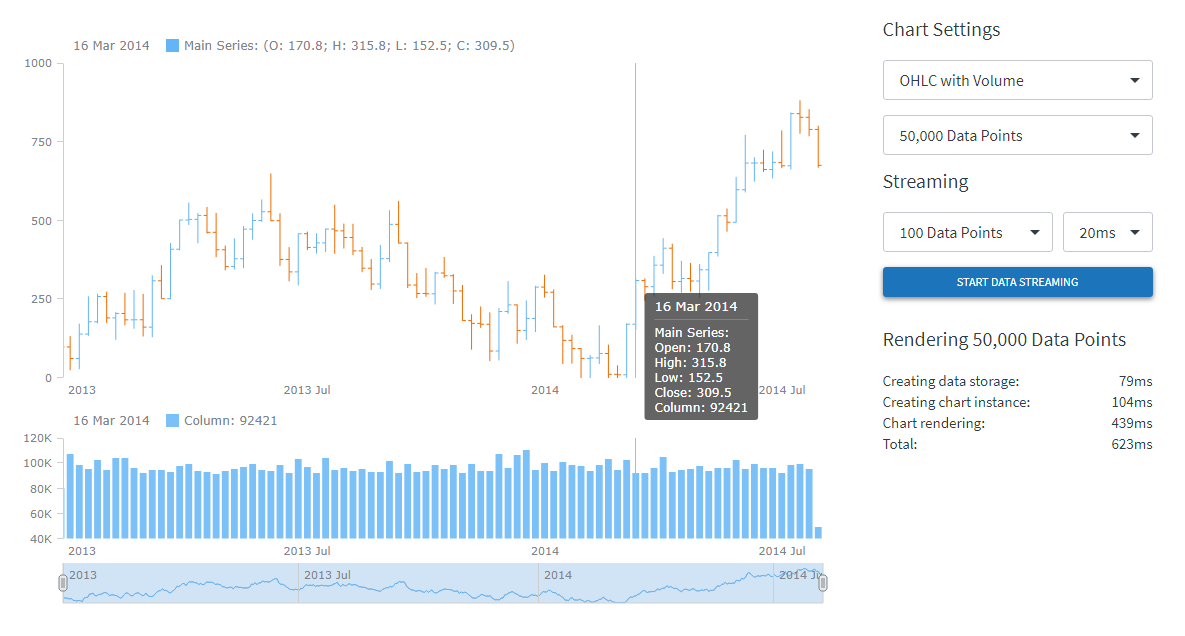 Big Data has been growing exponentially as a very special segment in the core of today’s data analytics, with all the more organizations and companies collecting, visualizing, exploring and communicating large amounts of various kinds of data. In this article, we will talk about notable big data trends that we see in and for 2017 and also take a quick look at some technologies being widely used in this field today.
Big Data has been growing exponentially as a very special segment in the core of today’s data analytics, with all the more organizations and companies collecting, visualizing, exploring and communicating large amounts of various kinds of data. In this article, we will talk about notable big data trends that we see in and for 2017 and also take a quick look at some technologies being widely used in this field today.
Big Data in 2017 – Data Tsunami
The exponential growth of data in 21st century gave birth to what is called big data. The shocking part is that the last 2 years have generated 90% of total data generated till now. Increase in data led to transition of every industry and everyone working on data projects now to get the best out of it.
Those who started working on big data 3-4-5 years back on a small scale are deploying big data projects on a large scale in 2017. This clearly proves that the global trend of big data is rising year by year.
Nowadays, more than 70% of organizations are reported to be leveraging big data analytics to gain more insights and eventually more profits.

One of the biggest contributors of big data is social media. This segment provides a whole lot of information on people and their behavior, that’s why it is one of the most important factors in the evolution of big data.
Below are some amazing statistics about the volume of the social media contribution:
- Facebook users like 4,166,667 posts every minute.
- Every minute, Instagram users like 1,736,111 posts.
- 230+ millions of tweets are created on Twitter every day.
- YouTube users upload 300 hours of new video every minute of the day.
- Twitter users send 347,222 tweets every minute.
- Reddit users cast 18,327 votes per minute.
Big Data Applications
Whether it’s telecom, retail, healthcare, manufacture or any other industry, latest big data trends have seen various different use cases on which they are having big data applications. Instead of worrying about the volume of data out there, they see it as an opportunity to create amazing applications by leveraging it.
Below are a few application examples for big data and its use trends in different industries:
- Retail: Retail has been one of the biggest beneficiaries of big data analytics as they generate a lot of data, and a lot of customer purchase behavior analysis for product recommendations and re-marketing is done by organizations like Amazon.
- Manufacturing: Analyzing big data in manufacturing helps in reducing component defects, increasing efficiency, and saves a lot of time and money.
- Smarter Healthcare: Large amounts of important data about patients are generated every day in hospitals. A widespread example of the big data application in healthcare is analyzing patients’ data to prevent any health issue beforehand by alerting the doctors in good time.
- Telecom: Many times while you are on a call you face a lot of lags, also the audio issues and much more. Telecom industry leaders like Vodafone, AT&T, Airtel are leveraging big data applications to provide a seamless connection to their customers by reducing data packet loss which occurs when networks are overloaded.
- Search Quality: Google stores huge volume of data and uses big data applications to give faster search results. There are hundreds of big data applications on which Google is working right now.
Big Data Trends: Technology

To work with large amounts of data there are a lot of big data software tools available in the market, new technologies and always better frameworks are coming up every year.
Yes, I am talking about technologies like Hadoop, Spark, Kafka, as well as machine learning etc. Organizations use these technologies to build next gen big data applications which are the game changer.
In 2017, the use of these technologies is huge in number and also several new frameworks have come up adding more value. Let me share a few insights on how technologies in big data are being used today because this will actually help us see some top big data trends.
1. Wider Adoption of Hadoop
When Hadoop framework was new on the market 4-5 years back, quite very few were using it. But as the time passed and big data evolved, more organizations have adopted Apache Hadoop as their core framework for working with big data.
Apache Hadoop is open source so its free to use, but you have several distributors also on Hadoop, like Cloudera, HortonWorks, MapR that make it very easy for you to use Hadoop.
2. Real-Time Processing Frameworks (Apache Spark, Storm, Kafka, Flink)
Along with Hadoop, there is another framework which is very popular and always used in integration with Hadoop, i.e. Apache Spark.
Hadoop is not really there for real-time and fast processing, that’s why Spark came into the picture. In fact, Apache Spark is used for real-time processing of data, and since it uses in-memory computation, hence it is very fast.
There are other popular big data tools for real-time processing such as Apache Storm, Apache Kafka, Apache Flink, etc. You will find these tool in any big data processing use cases.
3. Machine Learning and Automation
Of late, there has been a lot of focus on automation and machine learning.
Machine learning is applied over massive data to understand the correlations and relationships between disparate data sources. It is ideal for exploiting the opportunities hidden in big data.
And the best part is, unlike traditional systems, machine learning is best suited when you have a really huge amount of data. That’s why this and big data gel together easily.
4. Deep Learning
Deep learning is basically a branch of machine learning and it is completely based on the artificial neural network. It has shown great potential for solving business problems.
Deep learning is primarily useful for understanding large amounts of unlabeled/unsupervised data, making it attractive for extracting meaningful representations and patterns from big data. It is being used in big data analytics for semantic indexing, data tagging, extracting complex patterns from massive volumes of data, fast information retrieval, and simplifying discriminative tasks.
5. Digital Transformation
Speaking about big data trends, we should also say a few words about the digital transformation. Basically, it is nothing but the pace of change occurring in today’s world driven by the rapid adoption of technology. In simple words, it is strategic, planned, organizational change.
Today the organizations are building new generation application using IoT, artificial intelligence, virtual reality, etc., and what all of these have in common is big data analytics, the heart of the digital transformation.
In simple words, you can say that big data is the fuel to energize digital transformation. In fact, it is unlocking digital customers, markets, and channels and it is essential to run the digital enterprise.
Conclusion
So, folks, big data is a global matter. It is not going anywhere off the radar in coming years. Indeed, it is here to stay, a lot of big data applications will still be created in the future, and maybe we’ll see even more of worth-mentioning, new big data trends then.
The technologies in big data are also growing day by day to make its analytics easier. The future of big data analytics is very bright, so if you are thinking for a change in your career, it might one of some good options.
- Categories: Big Data, Business Intelligence, Dashboards
- No Comments »
